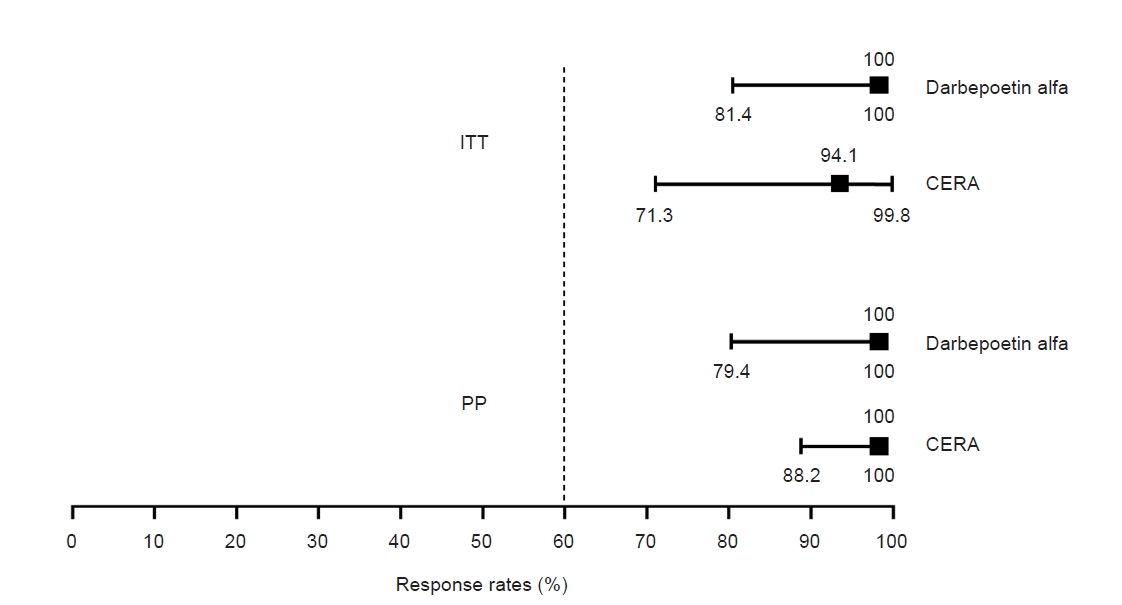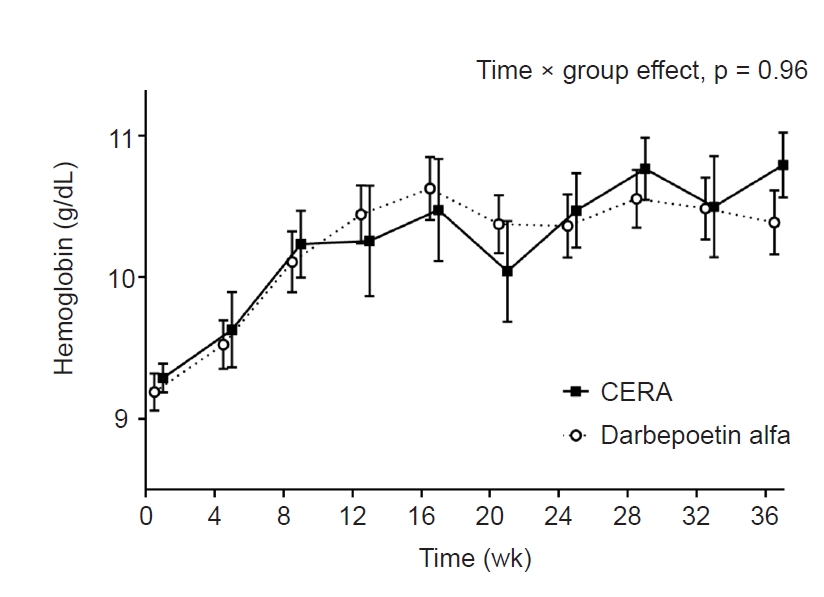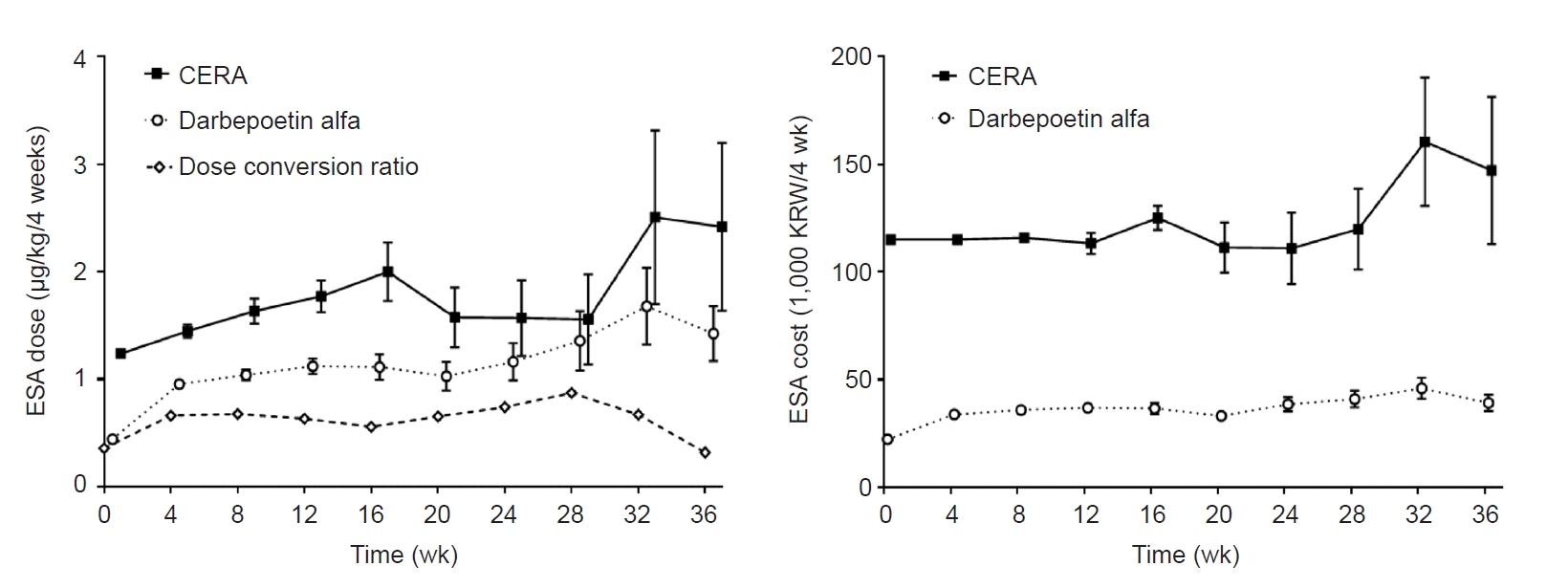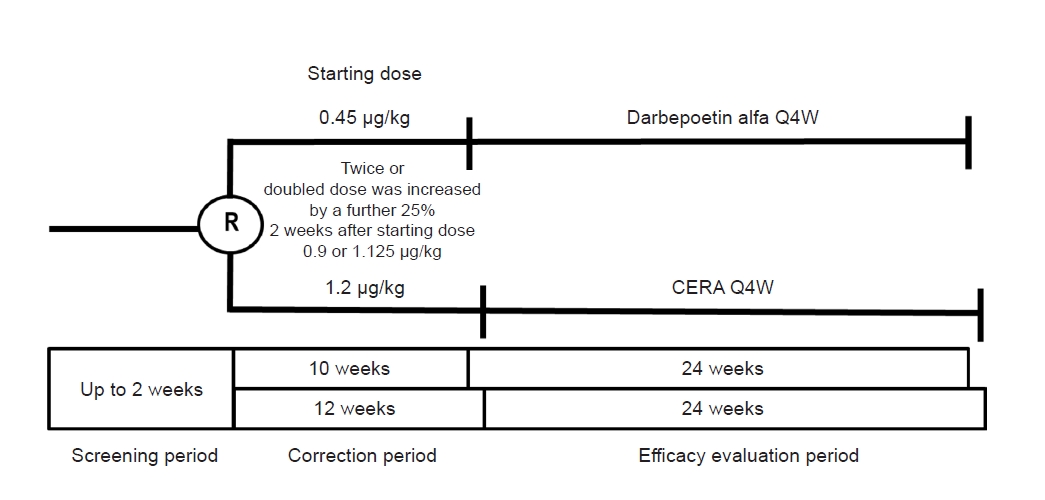1. McClellan W, Aronoff SL, Bolton WK, et al. The prevalence of anemia in patients with chronic kidney disease.
Curr Med Res Opin 2004;20:1501–1510.


2. Vlagopoulos PT, Tighiouart H, Weiner DE, et al. Anemia as a risk factor for cardiovascular disease and all-cause mortality in diabetes: the impact of chronic kidney disease.
J Am Soc Nephrol 2005;16:3403–3410.

3. Kuriyama S, Tomonari H, Yoshida H, Hashimoto T, Kawaguchi Y, Sakai O. Reversal of anemia by erythropoietin therapy retards the progression of chronic renal failure, especially in nondiabetic patients.
Nephron 1997;77:176–185.


4. Levin A, Djurdjev O, Duncan J, Rosenbaum D, Werb R. Haemoglobin at time of referral prior to dialysis predicts survival: an association of haemoglobin with long-term outcomes.
Nephrol Dial Transplant 2006;21:370–377.


5. Abramson JL, Jurkovitz CT, Vaccarino V, Weintraub WS, McClellan W. Chronic kidney disease, anemia, and incident stroke in a middle-aged, community-based population: the ARIC Study.
Kidney Int 2003;64:610–615.


6. Ershler WB, Chen K, Reyes EB, Dubois R. Economic burden of patients with anemia in selected diseases.
Value Health 2005;8:629–638.


7. Astor BC, Coresh J, Heiss G, Pettitt D, Sarnak MJ. Kidney function and anemia as risk factors for coronary heart disease and mortality: the Atherosclerosis Risk in Communities (ARIC) Study.
Am Heart J 2006;151:492–500.


8. The US Recombinant Human Erythropoietin Predialysis Study Group. Double-blind, placebo-controlled study of the therapeutic use of recombinant human erythropoietin for anemia associated with chronic renal failure in predialysis patients.
Am J Kidney Dis 1991;18:50–59.


9. Locatelli F, Del Vecchio L. Erythropoiesis-stimulating agents in renal medicine.
Oncologist 2011;16 Suppl 3:19–24.



10. Macdougall IC. Novel erythropoiesis-stimulating agents: a new era in anemia management.
Clin J Am Soc Nephrol 2008;3:200–207.

11. Macdougall IC. Optimizing the use of erythropoietic agents: pharmacokinetic and pharmacodynamic considerations.
Nephrol Dial Transplant 2002;17 Suppl 5:66–70.


12. Robinson DM, Easthope SE. Darbepoetin alfa: its use in anemia associated with chronic kidney disease.
BioDrugs 2005;19:327–343.


13. Ohashi N, Sakao Y, Yasuda H, Kato A, Fujigaki Y. Methoxy polyethylene glycol-epoetin beta for anemia with chronic kidney disease.
Int J Nephrol Renovasc Dis 2012;5:53–60.



14. Carrera F, Disney A, Molina M. Extended dosing intervals with erythropoiesis-stimulating agents in chronic kidney disease: a review of clinical data.
Nephrol Dial Transplant 2007;22 Suppl 4:iv19–iv30.


15. Macdougall IC, Ashenden M. Current and upcoming erythropoiesis-stimulating agents, iron products, and other novel anemia medications.
Adv Chronic Kidney Dis 2009;16:117–130.


16. Disney A, Jersey PD, Kirkland G, et al. Darbepoetin alfa administered monthly maintains haemoglobin concentrations in patients with chronic kidney disease not receiving dialysis: a multicentre, open-label, Australian study.
Nephrology (Carlton) 2007;12:95–101.


17. Roger SD, Locatelli F, Woitas RP, et al. C.E.R.A. once every 4 weeks corrects anaemia and maintains haemoglobin in patients with chronic kidney disease not on dialysis.
Nephrol Dial Transplant 2011;26:3980–3986.



18. Macdougall IC, Walker R, Provenzano R, et al. C.E.R.A. corrects anemia in patients with chronic kidney disease not on dialysis: results of a randomized clinical trial.
Clin J Am Soc Nephrol 2008;3:337–347.


20. Silver MR, Agarwal A, Krause M, Lei L, Stehman-Breen C. Effect of darbepoetin alfa administered once monthly on maintaining hemoglobin levels in older patients with chronic kidney disease.
Am J Geriatr Pharmacother 2008;6:49–60.


21. Agarwal AK, Silver MR, Reed JE, et al. An open-label study of darbepoetin alfa administered once monthly for the maintenance of haemoglobin concentrations in patients with chronic kidney disease not receiving dialysis.
J Intern Med 2006;260:577–585.


22. Furukawa T, Okada K, Abe M, et al. Randomized controlled trial of darbepoetin α versus continuous erythropoietin receptor activator injected subcutaneously once every four weeks in patients with chronic kidney disease at the pre-dialysis stage.
Int J Mol Sci 2015;16:30181–30189.



23. Roger SD, Kolmakova E, Fung M, et al. Darbepoetin alfa once monthly corrects anaemia in patients with chronic kidney disease not on dialysis.
Nephrology (Carlton) 2014;19:266–274.


24. Kutluturk Karagoz I, Keskin B, Özkalaycı F, Karagöz A. Linear mixed model better than repeated measures analysis.
Eur J Ophthalmol 2020;30:NP1–NP2.


25. Weir MR. Managing anemia across the stages of kidney disease in those hyporesponsive to erythropoiesis-stimulating agents.
Am J Nephrol 2021;52:450–466.



26. Bernardo M, Crawford P, Hertel J, et al. Assessment of time and practice resources required to provide weekly or monthly erythropoiesis-stimulating protein therapy to chronic kidney disease patients in the physician office setting.
J Manag Care Pharm 2006;12:714–725.



27. Kiss Z, Elliott S, Jedynasty K, Tesar V, Szegedi J. Discovery and basic pharmacology of erythropoiesis-stimulating agents (ESAs), including the hyperglycosylated ESA, darbepoetin alfa: an update of the rationale and clinical impact.
Eur J Clin Pharmacol 2010;66:331–340.



28. Hoggard J, Crouch T, McMurray S, et al. Preference for monthly darbepoetin alfa dosing in patients with chronic kidney disease not receiving dialysis.
Curr Med Res Opin 2006;22:2023–2030.


29. Macdougall IC, Padhi D, Jang G. Pharmacology of darbepoetin alfa.
Nephrol Dial Transplant 2007;22 Suppl 4:iv2–iv9.


30. Kliger AS, Foley RN, Goldfarb DS, et al. KDOQI US commentary on the 2012 KDIGO Clinical Practice Guideline for Anemia in CKD.
Am J Kidney Dis 2013;62:849–859.


32. KDOQI; National Kidney Foundation. II. Clinical practice guidelines and clinical practice recommendations for anemia in chronic kidney disease in adults.
Am J Kidney Dis 2006;47:S16–S85.


33. Macdougall IC, Bock AH, Carrera F, et al. FIND-CKD: a randomized trial of intravenous ferric carboxymaltose versus oral iron in patients with chronic kidney disease and iron deficiency anaemia.
Nephrol Dial Transplant 2014;29:2075–2084.



34. Macdougall IC, White C, Anker SD, et al. Intravenous iron in patients undergoing maintenance hemodialysis.
N Engl J Med 2019;380:447–458.


















 PDF Links
PDF Links PubReader
PubReader ePub Link
ePub Link Full text via DOI
Full text via DOI Download Citation
Download Citation Supplement table 1
Supplement table 1 Print
Print















